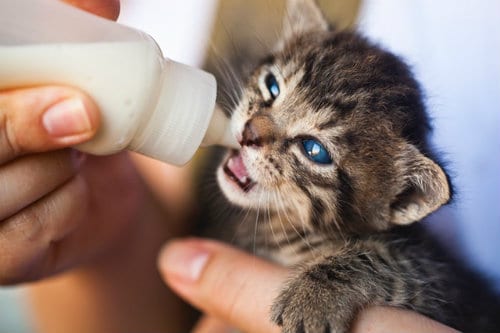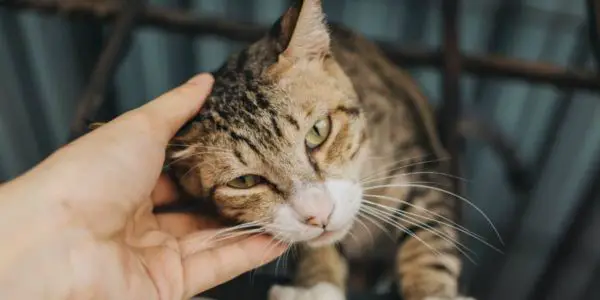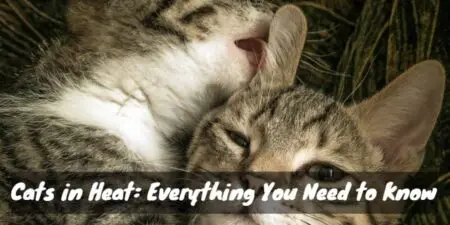If you sometimes believe it’s easier to communicate with your cat than it is to have a conversation with your spouse or teenager, you’re not alone. Veterinarians around the world insist that cat communication is a fact of life, so next time you look at your cat, and she begins to change her demeanor, you may want to say, “I get it.”
For professionals who already get it, cats are like humans. They use all of their senses to try and make sense of the world in which we live. That means the moves cats make toward each other (and to you) include touch, sound, scent, and body language. Alone or in concert, these actions are ways they communicate with us.
Touch or Smell: Which Is the Strongest Communication Skill?

We won’t leave you hanging; both of these senses combine to send cat parents the message, “I own you, but you can pretend you own me.” They work in concert: Glands throughout the feline body emit scents, as do the gifts kitties leave in their litterboxes. Rubbing transmits these markers and serves as a prime communication tool.
Can you read your cat’s face? Not necessarily. But cat tails are a different story. From expressing their fear by expanding their tails so they’re as thick and formidable as possible to that tell-tail swishing that says, “You can stop brushing me now” or “There’s a squirrel on our porch, and he’s staring at me,” you’re communicating by body language so respond accordingly — especially if
The Sound of Silence? Not so Much
We’ve had many cats and can attest that their purrs are as distinct as their coats. On the other hand, the clicking sound our furry friends make when that porch squirrel put a nose against the glass is a sound that says a lot. Your cat is telling you that there’s something to worry about outside.
Check out your cat’s body if you need further clues because you’re not sure why she’s making the sound she’s emitting. If she’s purring, for example, but her ears are pointed back, and her eyes look like she’s auditioning for a Zombie apocalypse film, you can cross contentment off your list of possibilities.
Speaking of the all-mighty purr, if you’re the parent of multiple cats, you can probably tell one from the other in the dark because you have learned to identify the pitch and volume each cat exhibits. And yes, purring can indicate more than contentment; some cats purr when they’re in pain, and some felines even emit vowel patterns when they purr. It’s a sign that they want food. Got the message?
Cat Chat 101

You’ve already figured out that cats are born with a variety of skill sets that make communicating with humans a natural process, but you want more. You want to share your thoughts and needs with your non-rent paying pet and need education on ways to do just that. Consider this your tutorial.
Move #1: The Eyes Have It, so Learn to Blink Like a Snail
By learning to slow your blinks so methodically another human might think you’re nodding off, you’re actually sending a signal that your cat can trust you-—even after you’ve admonished her for knocking down Aunt Edna’s priceless vase. Slow blinks are soothing exercises for both of you—-especially if you have a high-stress job.
Move #2: Stop Psychoanalyzing Your Cat
She’s not bummed that you left her alone over the weekend if she doesn’t seem to be her usual self when you return. If your arrival gets you nothing more than a glance from the bed or a momentary acknowledgment, she could be having health or behavior issues but has no clue how to tell you other than to behave differently. A change in litterbox behavior is a particularly strong sign that something weird is afoot. Or a-pawed.
Move #3: Give Your Voice the Respect It Deserves
Here’s news that could shatter the spirit of anyone who is a bass or a baritone: cats pay more attention to sopranos than they do to humans whose voices have deeper pitches. It’s possible to communicate with your cat at any pitch, but if you’re a soprano, you two were BFFs from birth so your communications may be far superior to that enjoyed by friends and their felines whose voices are at the bottom of the register.
Move #4: Think of Your Cat as a Human Baby

It’s not a hard stretch. Babies scream when they’re hungry. They don’t like their diapers dirty, nor do some cats put up with dirty litter boxes. You might get a devoted glance from either species! But here’s a surprise: your cat’s repertoire surpasses a baby’s. According to PetFinder.com, a single meow can have up to 10 meanings, so don’t make assumptions. She could be sending a completely different message.
Move #5: Learn to Talk Back
You’ve checked Tuna’s tail, listened to his purr, and figured out the pitch in her meow that states, “Food now or I can’t be responsible for my next move.” But you still crave a way to answer when he’s obviously in the mood for a chat. Employ that slow-blink technique to get started and get your paws on a copy of “Cat Talk: What Your Cat Is Trying to Tell You.” Think of this as Babbel for cat parents without the app.
Move #6: Is Your Cat Telling You She’s Ready for Assisted Living?
Even rescue cats can have their ages guesstimated by a savvy vet, and if you happen to know when your cat was born (because it happened under your shed), even better. Aging cats get more vocal as they grow older, say vets, so if you notice an dramatic increase in meowing, you may wish to check your cat’s age because this could mean that she is entering her golden years.
Is It a Meow or a Yowl?

No translator is needed to decipher the difference if you’re a keen observer of your cat’s talking patterns, but according to Catster.com, you may hear a bizarre sound coming from the mouth of your best bud that you’ve never heard before. Check these explanations out to see if your cat is trying to tell you something specific:
Weird Sound #1
You race to the window to see if a cricket has gotten in. Nope. Your cat is on one side of the window pane. One or more birds are on the other. This clicking sound appears to be your cat’s way of terrorizing winged creatures. The birds? They get the fact that there’s a pane of glass separating them.
Weird Sound #2
You don’t own a dog, but you hear barking, and it’s coming from somewhere within your home. This is a clever trick some cats undertake by accessing the part of their voice box apparatus that gives them this power. Say the folks at Catster.com, this is simply an ego trip calling for a chin scratch.
Weird Sound #3
He’s dozing peacefully when you detect a moaning sound that gives you pause. He’s dreaming of wonderful things and can’t stop himself from reacting to these experiences, with or without extremity twitches. You can ask him about the dream, but you’ll likely get a Cheshire smile rather than an explanation.
Weird Sound #4
Yes, cats growl. And they sound so scary pet parents often fear that it’s a sign that some demonic being has possessed the cat. In fact, this type of noise originates within a cat’s tummy, so when in doubt, fill a bowl or dispense a treat to vanquish the growl.
How to Improve Your Interaction With Your Cat

Scientists at National Geographic have traced the relationship between man and the domestic cat to around 9,500 years ago. These specialists have had plenty of time to formulate and make recommendations to humans about the best ways to improve the quality of “conversations” you have with your cat—especially since we live in a cat-dominated world where there are three pet cats for every dog on earth.
Animal behaviorist John Bradshaw, a University of Bristol expert, suggests that experimentation is the best way to go about upping communications skills between cats and parents. What do cats think of their humans? That depends upon the human. Cats often pick just one household member with whom they want to interact, and as far as they’re concerned, the rest of the family can leave town — just as long as her favorite person remains.
Further, they’re intuitive and don’t require college degrees to figure out what works with one person won’t work with anyone else. If you happen to be the cat’s MFP (Most favored person), you may even be mistaken for mom, which is why lucky recipients get massages once reserved for feeding time when it took some energy to compress milk from the mother’s body.
And yes, cats are trainable — just as long as there’s a benefit to be had from their clever tricks! Cats can learn to retrieve and even play roll the ball if enough time is taken to establish this behavior. Nothing beats a child’s water pistol for “discouraging” a cat from the behavior you want them to stop, and you don’t have to say a word to communicate your displeasure.
Dr. Bradshaw may be one of the biggest brainiacs on the planet when it comes to cat behavior, but he always leaves pet owners with one piece of advice that requires no advanced degree: Just about everything about communicating with felines is cat-specific. If you try a technique that, despite your earnest efforts, isn’t furthering your ability to communicate with your cat, “Be prepared to give up on it if it doesn’t work.” Enough said?
How to Understand Your Cat Better (Video)
Related Questions
1. How can I tell if my cat is trying to get my attention?
First, observe your cat’s body language and vocalizations. If they are meowing more than usual, swishing their tail, or rubbing against you, these may be signs that your cat is trying to communicate with you. Remember, each cat is unique, so pay attention to their individual behaviors and patterns to better understand their needs.
2. Can cats understand human emotions?
While cats may not fully comprehend human emotions, they are intuitive creatures and can often sense our moods. For example, a cat may notice if you’re upset and come to comfort you or give you space if they sense you’re angry. Building a strong bond with your cat and understanding their behaviors will help improve your communication with them.
3. How can I teach my cat to understand and respond to commands?
Training a cat requires patience, consistency, and positive reinforcement. Start with simple commands such as “sit” or “come” using a treat or toy as a reward. Gradually increase the difficulty of commands as your cat becomes more comfortable and responsive. Remember that cats are more likely to learn when motivated and see a benefit in the activity, so make training sessions fun and engaging for you and your feline friend.
4. Why does my cat knead me with their paws?
Kneading, also known as “making biscuits,” is a natural behavior for cats that originates from their kittenhood. When kittens nurse, they knead their mother’s belly to stimulate milk flow. This comforting behavior often carries over into adulthood, and your cat may knead you as a sign of affection or to soothe themselves. Providing your cat with a soft blanket or pillow to knead can also help them feel more comfortable and secure.
5. How can I tell if my cat is stressed or anxious?
Cats can experience stress and anxiety just like humans, and they may exhibit various signs to indicate their discomfort. Common indicators of stress in cats include excessive grooming or scratching, hiding, decreased appetite, and changes in litter box habits. If you notice these signs in your cat, try to identify any potential stressors in their environment and address them accordingly. Additionally, providing your cat with a quiet, safe space and engaging them in play or other calming activities can help alleviate their anxiety.
"In ancient times cats were worshipped as gods; they have not forgotten this."
-- Terry Pratchett





